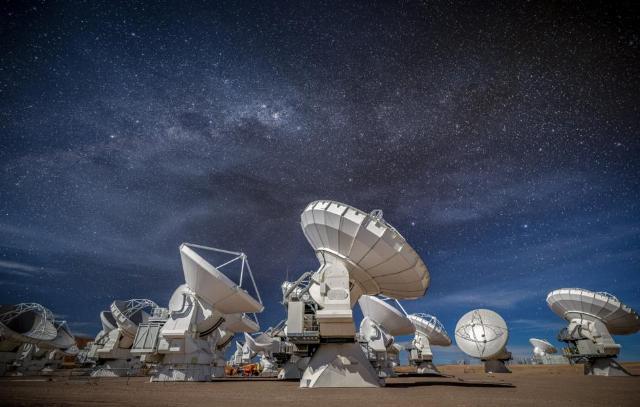Scientists together with astronomers from the University of Cambridge, studying the atmosphere of the exoplanet (a planet located outside the Solar system) K2-18b, have found chemical traces of gases that may indicate biological activity on the planet. TASS — about humanity's search for brothers in mind in other worlds, as well as what such an acquaintance can bring.
The opening was announced by the university's press service. Data on K2-18b was collected by the James Webb Space Telescope. They talk about the presence of dimethyl sulfide (DMS) and dimethyl disulfide (DMDS) in the atmosphere of the planet. "On Earth, VMI and DMDS are exclusively a product of vital activity, mainly of creatures such as marine phytoplankton," the report says. "Although unknown chemical processes may be the source of these molecules in the atmosphere of K2—18b, the results of the study provide the strongest evidence yet that life may exist outside our solar System."
The exoplanet was discovered in 2015 with the help of another space telescope, Kepler, launched specifically for the study of exoplanets. Since then, the distant world has been explored and its characteristics have been clarified.
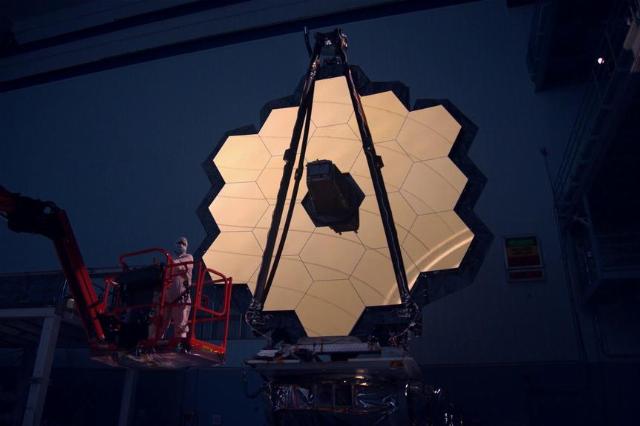
The James Webb Space Telescope
Image source: © NASA Goddard Space Flight Center
"Let's start with the fact that even this team has reported the discovery for the second time and, strictly speaking, it's still impossible to talk about some super reliable discovery, because it's just a refinement of the previously obtained result," said a Russian astronomer, Doctor of physico-mathematical sciences, head of the Department of Physics and the evolution of stars at the Institute of Astronomy of the Russian Academy of Sciences, Professor Dmitry Vibe. The scientist clarified that the research team used various instruments of the James Webb telescope to get a more reliable result, but for a truly reliable result they need more time for observations. "So far, traces of these two molecules have been detected, but there is no absolutely reliable detection," Wiebe said.
Is anyone alive?
Mankind assumed that it was not alone in the universe, back in ancient times. The ancient Greek philosopher Epicurus spoke of an infinite number of worlds (planetary systems) similar to ours. Until the end of the 20th century, astronomical instruments did not allow the discovery of planets orbiting other stars, although attempts to detect such celestial bodies have been made since the middle of the last century using optical astronomy methods.
The first such open world was a system of three planets orbiting the neutron star PSR B1257+12. It was discovered in 1992 due to the wave—like changes in the X-ray radiation of the star - scientists assumed that this was caused by the influence of other bodies located nearby. One of the discovered planets, which was named Draugr, is the lightest exoplanet: its mass is 0.02 times that of Earth. In 1995, astronomers discovered the first planet outside the Solar System near the sun-like star 51 Pegasus due to the Doppler shift of spectral lines. The calculations showed that the discovered celestial body was large (half the mass of Jupiter) and located very close to the star.
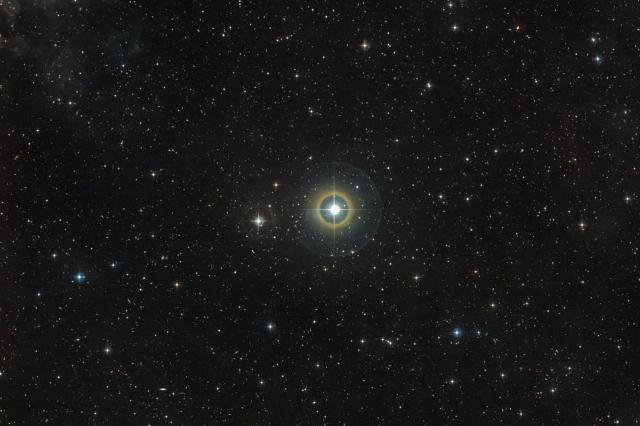
51 Pegasus
Image source: © ESO/ Digitized Sky Survey 2
Reaching out to heaven
Researchers searching for extraterrestrial intelligence attempted to hear radio signals sent by hypothetical space civilizations and send them messages. In 1924, scientists suggested that during the approaching great confrontation of Mars, when the planet would be closest to Earth, it would be possible to receive signals from Martian radio stations. The idea was supported by the US military, and for some time the researchers, along with the radio operators of the US Navy, listened to the broadcast. The experiment ended in failure.
In 1960, British astronomer Frank Drake began listening to signals from the area of the stars Tau Ceti and Epsilon Eridani (they are 11 light-years away from Earth and look like the Sun - it was assumed that they had planetary systems) using a radio telescope, hoping to hear artificial signals - radio or television broadcasts from aliens. In 1984, the Institute for the Search for Extraterrestrial Civilizations (SETI) was established, and in 1995, the search for extraterrestrial radio signals began under the Phoenix program, which lasted until 2015. Radio observations were conducted for hundreds of nearby sun-like stars.
Earthlings also tried to send messages in the hope that space civilizations were also listening to the sky. In 1962, Soviet scientists sent the message "Peace. Lenin. The USSR" in the direction of Venus is the first radio message of its kind. In 1974, the radio telescope of the Arecibo Observatory (Puerto Rico) sent a message towards a star cluster in the constellation of Hercules. Scientists hoped that the recipient would decode it and receive an image containing numbers, atomic numbers of chemical elements, information about the Solar system, a schematic image of a person and a radio telescope. The message will reach the star cluster in 25,000 years, and it will take the same amount of time for a response from a potential correspondent to return.
Attempts to detect radio signals of artificial extraterrestrial origin continue today. So, in 2024, SETI experts listened for 28 hours to possible radio traffic that could be exchanged by the inhabitants of the planets of the TRAPPIST-1 star system in the constellation Aquarius, located at a distance of 41 light years. Scientists recorded about 6 million signals, 2.6 thousand of which were analyzed in detail. However, their technogenic nature has not been identified. Radio astronomers justified themselves that the available equipment would be able to detect the transmitters of the hypothetical inhabitants of the TRAPPIST-1 system with a power of 2 terawatts - no earthly development is capable of such a thing.
The number of discovered exoplanets has dramatically decreased in the 21st century with the improvement of astrometry tools. For example, new objects are discovered due to the fact that they, rotating in orbits, obscure the star of their system and the brightness of the celestial body decreases. Increasing the accuracy of measurements made it possible to discover even small planets far from the star using the Doppler method.
Dmitry Vibe clarified that today, in some cases, exoplanets can be observed directly. "But so far our technology allows us to do this only in rather specific cases, when the planet itself is bright and at the same time is far enough away from the parent star," the astronomer added. — Far away — it means at distances exceeding, for example, the distance from Jupiter to the Sun. These are some very large systems where the planet is far from the star. <...> In other cases, it is really the subject of a comparative analysis of radiation, when we see only the radiation of a star, stars and planets, stars partially covered by a planet." The RAS professor clarified that such methods are quite reliable, they allow us to determine the chemical composition of the atmosphere and the physical conditions on the planet — the scientists' tools are well-developed and used, including in our Solar system.
Is there life on K2-18b?
Today, almost 7.5 thousand exoplanets are known (the US National Aeronautics and Space Administration reports 5.8 thousand confirmed discoveries of celestial bodies of this class). They vary greatly in characteristics: scientists have discovered exoplanets located very close to the star of their system, in circular and elongated orbits like comets, planets entirely covered by an ocean with a depth of 100 km. There are distant worlds that are constantly facing the star with one side and covered with molten lava, iron and, conversely, very loose planets.
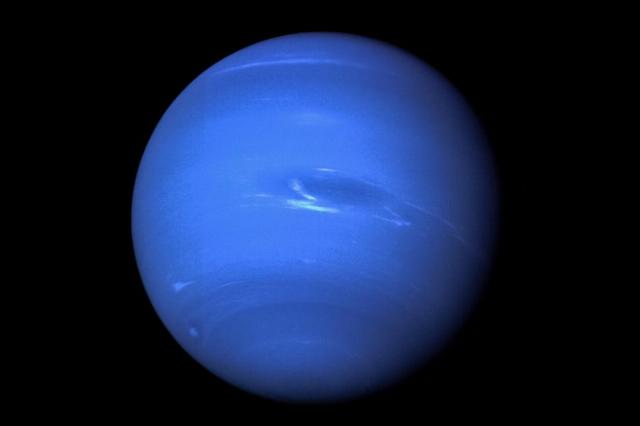
Neptune
Image source: © NASA/ JPL
Dmitry Vibe believes that life on the exoplanet K2-18b is unlikely, since it does not look like Earth. "This is, at best, an ocean planet that is covered with a continuous layer of water, and its atmosphere has completely different conditions from those on Earth, as we are used to," he said. — It is more massive, there is more gravity. But that's the best case scenario. And at worst, it's a Neptune—type planet, meaning it's completely uninhabitable."
The astrophysicist noted that scientists know a certain number of planets with a lower mass and a rocky surface. In addition, they are located in the so—called habitable zones - in the range of distances from the central star of the planetary system, which allows liquid water to exist on the surface of the planets. However, according to Vibe, these planets have not yet been sufficiently explored.
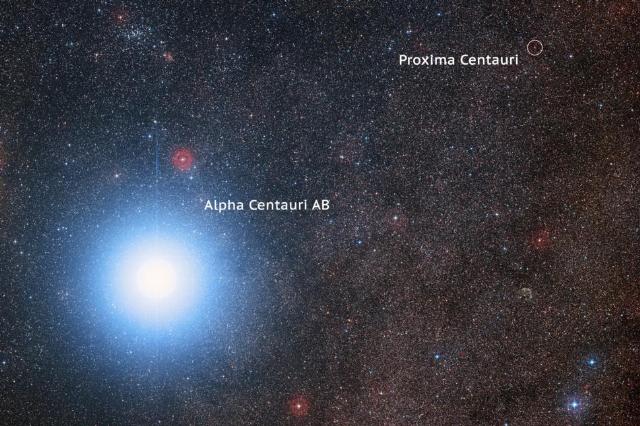
The triple star system in the constellation Centaurus
Image source: © ESO/ Digitized Sky Survey 2 Recognition: Davide De Martin/ Mahdi Zamani
"Planets at relatively small distances are now available to our instruments for such detailed studies," said the RAS professor. "ru/sci/6821761/amp" target="_blank" rel="nofollow">The closest planet to us, which may turn out to be an Earth—type planet, is that we are so lucky that it orbits the nearest star, which is a little over four light-years away. This is, of course, a colossal distance by earthly standards, but by universal standards we are exploring only our immediate surroundings, so on a cosmic scale these are all fairly close bodies," he added.
What can contact with aliens bring?
Although there are currently no signs of intelligent life in the universe, scientists continue to speculate about the possibility of contact with extraterrestrial civilizations and their hypothetical consequences. The latter are evaluated diametrically opposite.
SETI radio astronomer Sebastian Rudolf Karl von Horner believed that such an interstellar acquaintance could become a colossal scientific and civilizational breakthrough, on par with the invention of speech. British theoretical physicist, Nobel laureate Stephen Hawking, on the contrary, believed that earthlings should be careful in seeking contacts with them, since meeting with more advanced civilizations threatens expansion, similar to the "meeting of native Americans with Columbus."

© Roman Kanashchuk/ TASS
Image source: © Roman Kanashchuk/ TASS
"Given that we know absolutely nothing about the presence of extraterrestrial civilizations, their frequency of occurrence, and their capabilities, contact can occur at any moment, or it may never happen," Dmitry Vibe shared his opinion with TASS. — That is, unfortunately, we cannot say anything definite here yet. Accordingly, what this contact will bring us is also only the subject of our fantasies. Here, everyone can come up with something for themselves, and it will be normal and reliable. As authentic as any other fantasy."
Victor Bodrov
